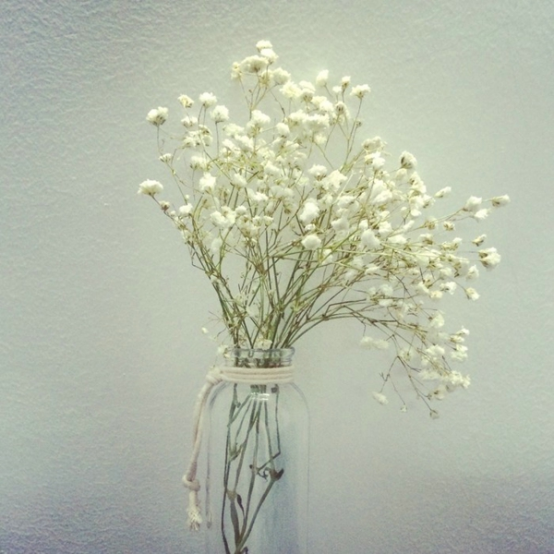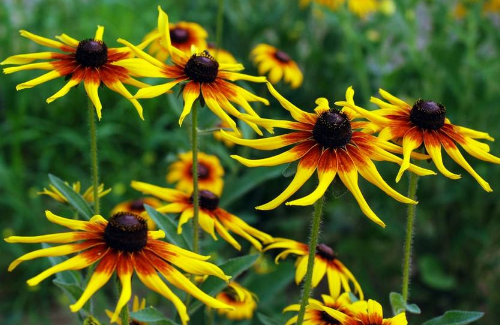How to raise the tiger orchid
1. Soil
Tiger orchid still has certain requirements for soil, it is better to be loose, breathable and well drained, and the soil should be slightly acidic. We can configure this kind of soil ourselves, and we can mix rotten leaf soil, peat and river sand in a certain proportion. We will get the soil we need. if you think it's too troublesome, you can go to a special florist to buy this kind of soil.

2. Lighting
Tiger orchid likes the sun very much, and it should give enough light to the plant during its peak growth period, which is very beneficial to the growth of the plant, but in summer, because the sun is too strong, it should be given some shade to prevent the leaves of the plant from being injured. However, shading should also be paid attention to and should not be excessive, otherwise it will make the leaves of the plant thinner because of the lack of light, and if serious, it will also affect the flowering and ornamental of the plant.
3. Temperature
Cymbidium likes warm growing environment, and the most suitable growth temperature is different between day and night. It is appropriate to keep it between 16-21 ℃ during the day and 10-12 ℃ at night. And because the tiger orchid is very cold-resistant, so in winter, the temperature must not be below 5 ℃, otherwise the plant may be frostbitten, and the critical point may die.
The above is the introduction of how to raise the tiger orchid. Let's take a look at what else we need to pay attention to in the cultivation of tiger orchid.
How to raise tiger orchid culture methods and matters needing attention
Cymbidium is a common herb, which was previously produced in Africa and then introduced and planted in China, and now it is widely distributed. Because its tiger ear orchid has a high ornamental value, it attracts a lot of people's breeding. However, before breeding, we must understand its breeding technology is an issue that we are more concerned about.
How to raise the tiger orchid
1. The pot soil is a mixture of rotten leaf soil, coarse sand and peat. Fertilizer should be applied every ten days during the growing period of the plant, and the amount of fertilizer should not be too thick or excessive. When the basin soil is dry in summer and autumn, it should be watered in time and thoroughly. The winter tiger orchid will enter a semi-dormant state for a short time, so it should be watered less and placed indoors in the sunny place.
2. Shading should be carried out when the light is strong in summer, and the management of light and water and fertilizer should be strengthened in autumn, so as to promote the good development of inflorescence and benefit the graceful posture of the whole plant. The suitable temperature in the growing period is 18-24 ℃, and the temperature should be kept at 13-15 ℃ in winter.
Culture method of Cymbidium
1. Soil. Tiger orchid prefers slightly acidic soil. And the air permeability of the soil is better, so we can choose slightly acidic sandy soil, that is, a mixture of rotten leaf soil, peat and coarse sand. This is beneficial to the fluidity of air and the permeability of water in the soil layer, and is beneficial to the growth of Cymbidium.
2. Temperature. The growth temperature of Cymbidium is suitable for 16-21 ℃ in daytime and 10-12 ℃ at night. Because of its poor cold resistance, the winter temperature should not be lower than 5 ℃ and should be kept indoors or in a greenhouse to survive the winter.
3. Light. It is required that the tiger orchid like the semi-shady environment, especially in the dead summer, the tiger orchid should not be exposed to the sun, but it should not be in a completely dark corner, which is not conducive to the growth of the tiger orchid.
4, moisture: in the growing period of the tiger orchid, to keep the basin soil moist, to be slightly dry, to avoid rain, the basin soil can not accumulate water, otherwise it will cause the bulb to rot. Bulb rot is a disease caused by infection caused by a variety of fungi and a small number of bacteria. This can lead to the inability to pull out the tender stems or hinder the growth of the leaves, turn yellow to red or green, and eventually wither or even die.
5. Fertilization: during the growing period, nitrogen, phosphorus and potassium compound fertilizer should be applied every half a month. Promote the growth of tiger orchid and reduce diseases and insect pests.
Matters needing attention of tiger orchid
1. Tiger orchid likes sunny, warm and well-ventilated growth environment and is not resistant to severe cold. when it is cold in winter, it is most prone to frost injury, and its leaves will rot, wither and then fall, and the stem of the plant will also become dry.
2. so when it is cold, put it in a place with light on the balcony to give enough sunshine; when the weather is cold, you can wrap the plant with plastic film and take anti-freezing measures. Pay attention to ventilation, but do not let the plant face the tuyere.
Leaf spot of Cymbidium and its control methods
The main results are as follows: 1. The most common disease in the disease cycle of tiger orchid is leaf spot disease, which will seriously affect the leaves of plants, make them yellow gradually, and eventually lead to wilt. Sometimes it can lead to abnormal development of leaves or non-flowering. Reduce the normal growth of plants and the beauty of plants.
2. The cause when the tiger orchid has this condition, it shows that the plant growth environment is not suitable. It may be caused by inappropriate fertilizer and water.
3. We can fertilize the plants on time and on time, the specific time is that once every three months, the demand for light is very large, except summer, other seasons need to strengthen the light, if the sun is not enough, it can lead to thin leaves and even threaten the health of plants.
When the tiger orchid is cultivated, the good soil should be selected first, and then the light and temperature should be adjusted. After that, it is necessary to strengthen the management of water and fertilizer, too much or too little will be disadvantageous to its growth. When the tiger orchid is cultured, leaf spot is the most common, so it is also very important to prevent and cure the leaf spot.
How to raise tiger orchid? Culture methods and matters needing attention of Cymbidium
Tiger orchid is a perennial evergreen herb, also known as tiger tail orchid, cow tongue orchid and so on. The leaves of tiger orchid are green all the year round, the edges of the arc-shaped leaves appear soft and beautiful, and the white flowers are covered with yellow anthers at the top of the flowering, which is very suitable for indoor planting as an ornamental potted plant. So, how to raise the tiger orchid? The breeding methods and matters needing attention of Cymbidium are introduced as follows.
Picture: Tiger orchid
I. the growth habits of Cymbidium
Cymbidium is native to tropical Africa and is introduced and cultivated in China. Like the sunny, warm, moist, well-ventilated environment. It is drought-tolerant, not cold-resistant, and the suitable temperature for growth is 1525 ℃. It requires slightly acidic loam with good drainage. The cultivation substrate can be mixed with peat, rotten leaf soil and river sand. During the growing season, apply rotten cake fertilizer once a month, and then supplement phosphate fertilizer appropriately. The pots and ramets can be changed again after winter dormancy. In cold areas, it is necessary to move to the greenhouse for maintenance and ensure that the lowest temperature is 5 ℃, otherwise it is vulnerable to freezing damage.
Picture: Tiger orchid
Second, the culture method of tiger orchid
1. Soil: Huerlan is suitable for growing in loose, fertile and well-drained slightly acidic sandy loam, which can be mixed with peat, rotten leaf soil and river sand, and fertilized once every ten days during the growing period.
two。 Watering: the tiger orchid should be watered after the topsoil is dry. Avoid rain and stagnant water, which will cause the bulb to rot. If the basin soil is too dry in summer and autumn, it will affect the growth of leaves. There is a short-term semi-dormant state in winter, so watering should be reduced.
3. Lighting: Tiger orchid needs better lighting environment, shading in summer, and strengthening lighting in other seasons, too shading not only thinning leaves, but also affecting flowering and the posture of the whole plant.
4. Temperature: the suitable temperature for the growth of Cymbidium is 10: 12 ℃ at night and 16: 21 ℃ during the day. Summer should be semi-overcast, florescence should be cool, bulbs should be dormant and overwintering at the end of autumn, no less than 5 ℃, and keep the soil dry.
Picture: Tiger orchid
III. Matters needing attention in the culture of Cymbidium
1. Tiger orchid should pay special attention in the rainy season, do not let the rain, do not let the basin soil stagnant water, should be placed in shelter.
two。 Tiger orchid usually applies 15% cake fertilizer and water every half a month, and applies compound fertilizer twice before flowering.
3. If the light is not enough or the pot soil is wet, the branches and leaves will grow, which will cause the leaves to sag and reduce the ornamental value.
4. Tiger orchid is not very hardy, so it should be moved indoors in early winter and placed in the sunny place. As long as the temperature is not less than 0 ℃, it can survive the winter.
Picture: Tiger orchid
[editor's conclusion] Tiger orchid prefers a sunny, warm and humid environment and is resistant to drought but not cold, so it needs special attention in the process of maintenance. Above for you to introduce the tiger orchid culture methods and matters needing attention, I hope it can be helpful to everyone!
- Prev

Aquaculture and nursing care full of stars
First, the soil is suitable for the star in the soft soil, so that its roots can stretch and effectively absorb the water and nutrients in the soil. Generally speaking, the star prefers alkaline soil, so the soil contains certain alkaline substances, which will make the star grow more healthily.
- Next

How to raise black chrysanthemum
1. Because the black-hearted chrysanthemum has a strong adaptability, it does not have high requirements for the soil. The soil is only loose, breathable and well drained. Generally, we will choose sandy soil, which is very suitable for the growth of black-hearted chrysanthemum. 2. Temperature black chrysanthemum likes warm and ventilated growing environment
Related
- Fuxing push coffee new agricultural production and marketing class: lack of small-scale processing plants
- Jujube rice field leisure farm deep ploughing Yilan for five years to create a space for organic food and play
- Nongyu Farm-A trial of organic papaya for brave women with advanced technology
- Four points for attention in the prevention and control of diseases and insect pests of edible fungi
- How to add nutrient solution to Edible Fungi
- Is there any good way to control edible fungus mites?
- Open Inoculation Technology of Edible Fungi
- Is there any clever way to use fertilizer for edible fungus in winter?
- What agents are used to kill the pathogens of edible fungi in the mushroom shed?
- Rapid drying of Edible Fungi

